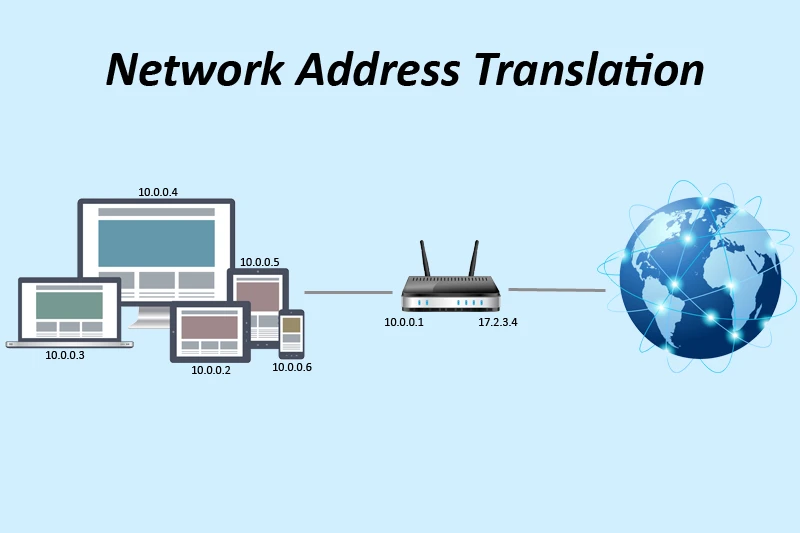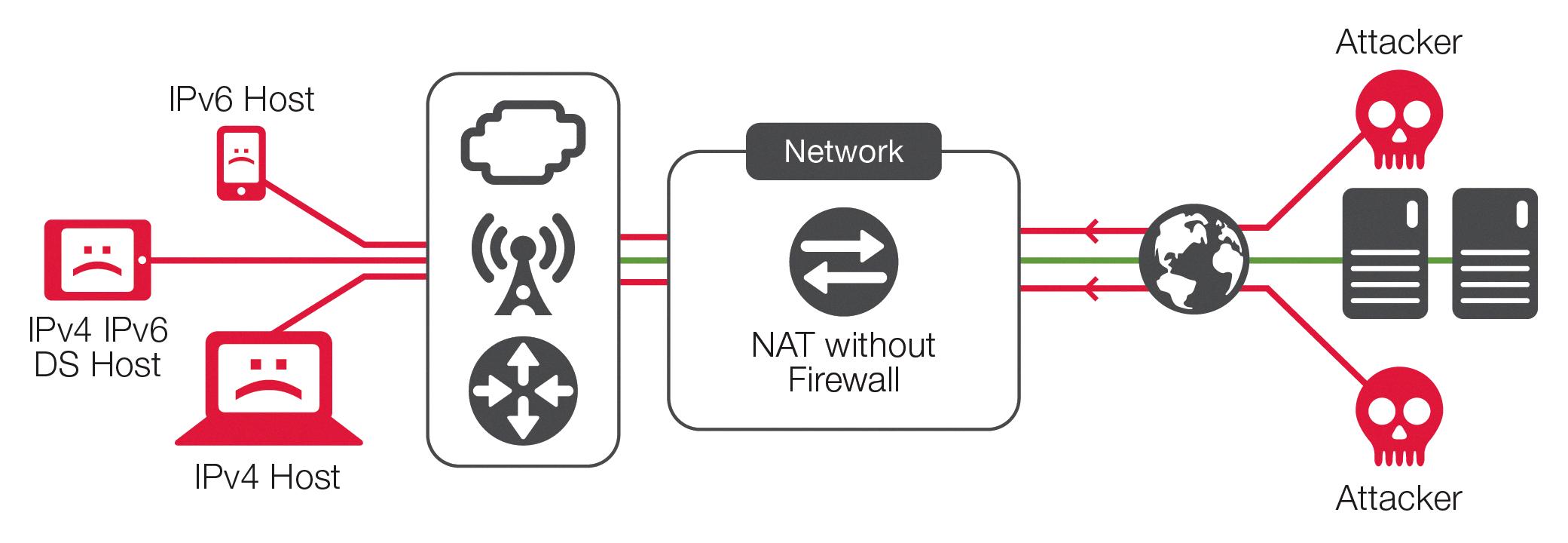Network Address Translation (NAT) is a popular technology used to manage and secure internet traffic. It’s often used in home and business networks to hide the identities of connected devices, as well as to conserve public IP addresses. NAT also allows for inbound traffic through a router configured to NAT using a technique known as port forwarding.
Port forwarding works by mapping specific destination ports to specific nodes, allowing for complete IP masquerading while still having services that can respond to incoming traffic. This means that any requests sent to an external server will be directed through the router’s public IP address rather than the device’s own private IP address, making it difficult for malicious actors or hackers to identify which device is actually making requests.
Not only does NAT provide security benefits, but it also helps conserve public IP addresses. Since many devices in the same network can share one public IP address, fewer of these resources need to be allocated for each network. This is especially useful in large organizations or networks with lots of connected devices, as it allows them to make more efficient use of their resources.
Overall, Network Address Translation is an important tool for managing and securing internet traffic. By allowing inbound traffic through a router configured with NAT and using port forwarding techniques, businesses and individuals alike can ensure their data remains secure while conserving valuable public IP addresses.

Allowing Inbound Traffic Through NAT Using a Technique
Port forwarding is a technique used to allow inbound network traffic to reach a device or service behind a router that has been configured with Network Address Translation (NAT). It is accomplished by configuring the router to forward all requests for a specific port or ports to a specific internal IP address. This way, the external source can access the services on the internal network even though they are behind a NAT-enabled router. Port forwarding can also be used to securely tunnel traffic from outside the network into an internal system, such as when using Virtual Private Network (VPN) technology.
Understanding Network Address Translation (NAT)
NAT (Network Address Translation) is a networking technology that enables a router or firewall to map public IP addresses to private IP addresses, allowing multiple devices on the same network to access the internet through a single public IP address. NAT is used to improve the security and efficiency of networks by hiding the internal IP addresses of computers and other devices from external networks. It also provides improved scalability by enabling multiple devices to share a single external address. NAT works by translating the private source address of an outgoing packet into a publicly routable destination address when it reaches the router, and then translating the destination address back into the private source address when it returns. This way, two-way communication can be established between two hosts on different networks, even though they have different IP addresses.
NAT Technique for Complete IP Masquerading and Responding to Incoming Traffic
NAT (Network Address Translation) is a technique that allows for complete IP masquerading while still allowing services to respond to incoming traffic. NAT is achieved by making outbound requests from a private network to an external address that appears to originate from the router’s public address. Incoming requests are then forwarded to the appropriate internal device based on the preconfigured port forwarding rules. This makes it possible for multiple devices on the same internal network to share a single public IP address while each having its own unique internal IP address. This technique provides a layer of security by obscuring the actual internal addresses and ports from outside sources, while still allowing incoming traffic to be routed back through the router.
The Benefits of Network Address Translation (NAT) for Improved Security
Network Address Translation (NAT) is a powerful security feature that helps protect networks from malicious activity and data breaches. It works by translating between the private IP addresses used within a network and the public IP addresses assigned to it by an Internet Service Provider (ISP). This prevents external users from accessing private networks, while still allowing authorized internal users to access the Internet.
First, NAT makes it difficult for malicious actors to gain access to a network as they need to know both the public IP address and the associated private IP address. Secondly, NAT also hides all the information about devices located behind a router, including their internal IP addresses. This makes it more difficult for external attackers to target those machines directly since they are not visible on the external network.
Finally, NAT can also be used to limit outgoing traffic based on certain criteria such as source or destination address, port number, or even protocol type. This allows administrators to add an additional layer of security by blocking suspicious traffic before it can even reach its intended destination.
In summary, Network Address Translation provides an excellent way of improving security by hiding internal IP addresses, preventing direct access from external sources, and limiting outgoing traffic based on pre-defined criteria.
Types of NAT
NAT, or Network Address Translation, is a technology used to allow multiple devices on a local network to use a single public IP address. There are three main types of NAT: static NAT, dynamic NAT, and PAT/NAT Overloading (also known as IP masquerading).
Static NAT maps a private IP address to a public IP address. This type of NAT is commonly used when there is an application or service that requires an unchanging IP address.
Dynamic NAT allows the mapping of unregistered private IP addresses to registered public IP addresses from a pool of public IP addresses. This type of NAT is often used in networks where the number of internal users exceeds the number of publicly assigned addresses.
PAT/NAT Overloading, also known as IP masquerading, uses port numbers to match requests from multiple internal hosts to one external address. This allows multiple users on the same network to access the internet using just one public IP address.

Source: f5.com
Inbound and Outbound NAT Explained
Inbound NAT (Network Address Translation) is a form of network translation that allows traffic from a remote network to enter a local network. This is typically used when the local network contains hosts that are not directly connected to the Internet but need to access services or resources on the Internet. Inbound NAT also allows for hosts on the local network to be given static or dynamic public IP addresses that can be used to access services or resources on the remote networks.
Outbound NAT (Network Address Translation) is a form of network translation that allows traffic from a local network to leave and enter a remote network, such as the Internet. Outbound NAT is used when multiple hosts on the local network need access to services or resources located on remote networks. Without outbound NAT, each host would need its own public IP address in order to communicate with external networks. Outbound NAT allows multiple hosts on the local network to share one public IP address while still being able to communicate with external networks.
Using NAT with a Source Port
Port Preservation is a technique used with Network Address Translation (NAT) where the source port chosen by a client is preserved by the router. This means that the same port number will be used for the outgoing connection as was used for the incoming connection. This ensures that the data sent from the client’s machine will be received correctly and routed to the correct destination, thus creating a more secure and reliable connection. Port preservation also allows for multiple devices to use a single public IP address and reduces the amount of traffic that needs to be routed through firewalls or other security protocols.
The Benefits of NAT in Preventing Inbound Connections
NAT (Network Address Translation) prevents inbound connections by hiding the internal IP address of the private network from any external connection attempts. When a device on the external network tries to connect to a device on the private network, the NAT firewall will discard the request because it does not recognize the internal IP address. This ensures that only trusted connections can reach devices on the private network, protecting them from malicious activity and security threats.
The Benefits of Masquerading in NAT
Masquerading in NAT (Network Address Translation) is a technique used to hide a private network behind a public IP address. This is done by replacing the addresses of multiple computers or devices on the private network with a single public IP address. This means that when a request is sent from the private network, it appears to be coming from the public IP address instead of from individual computers or devices. This has the advantage of keeping all requests from behind the firewall secure and anonymous. Masquerading also allows multiple computers and devices on a private network to access resources on the internet without having to configure port forwarding rules for each device, as all requests are now sent out through one single IP address.
Implementing NAT Translation
The best method of NAT translation for your network would be to use dynamic NAT. Dynamic NAT allows you to share public IP addresses with multiple private hosts, allowing them to access the internet while protecting their privacy from outside hosts. Dynamic NAT works by mapping a single public IP address to multiple private IP addresses so that when a request is made from a private host, the request is sent out using the public IP address and then sent back to the correct private host. This allows you to conserve your number of public IP addresses while still allowing access to the internet for each of your private hosts.
Conclusion
In conclusion, Network Address Translation (NAT) is an essential tool for providing secure, private access to the internet. It offers a layer of security by hiding the device’s IP address from the public network and allows multiple devices to use a single IP address. Furthermore, it provides flexibility in routing traffic through specific ports using port forwarding techniques. NAT is an invaluable tool for organizations and individuals alike who seek to protect their data while enjoying the benefits of the internet.








